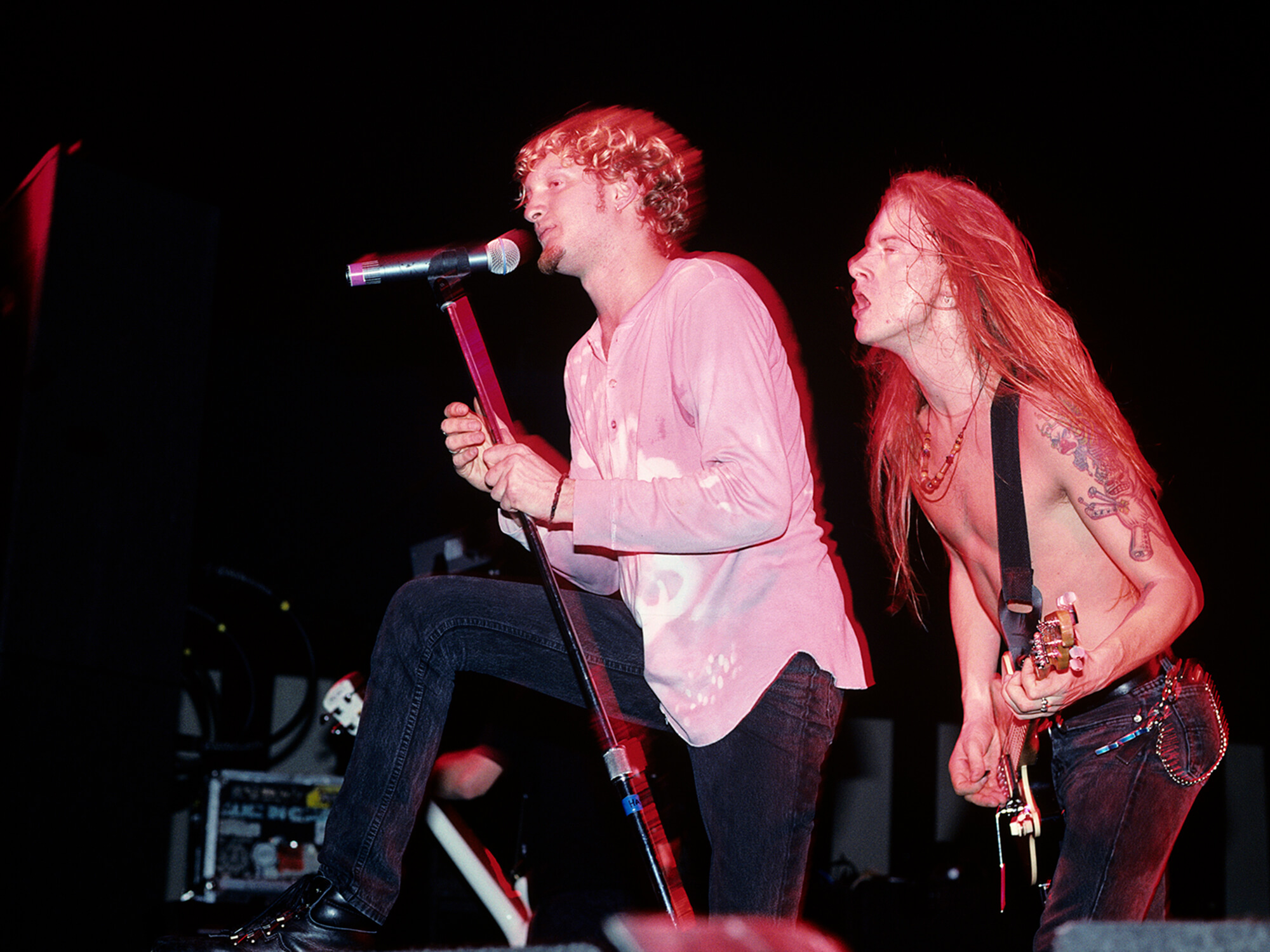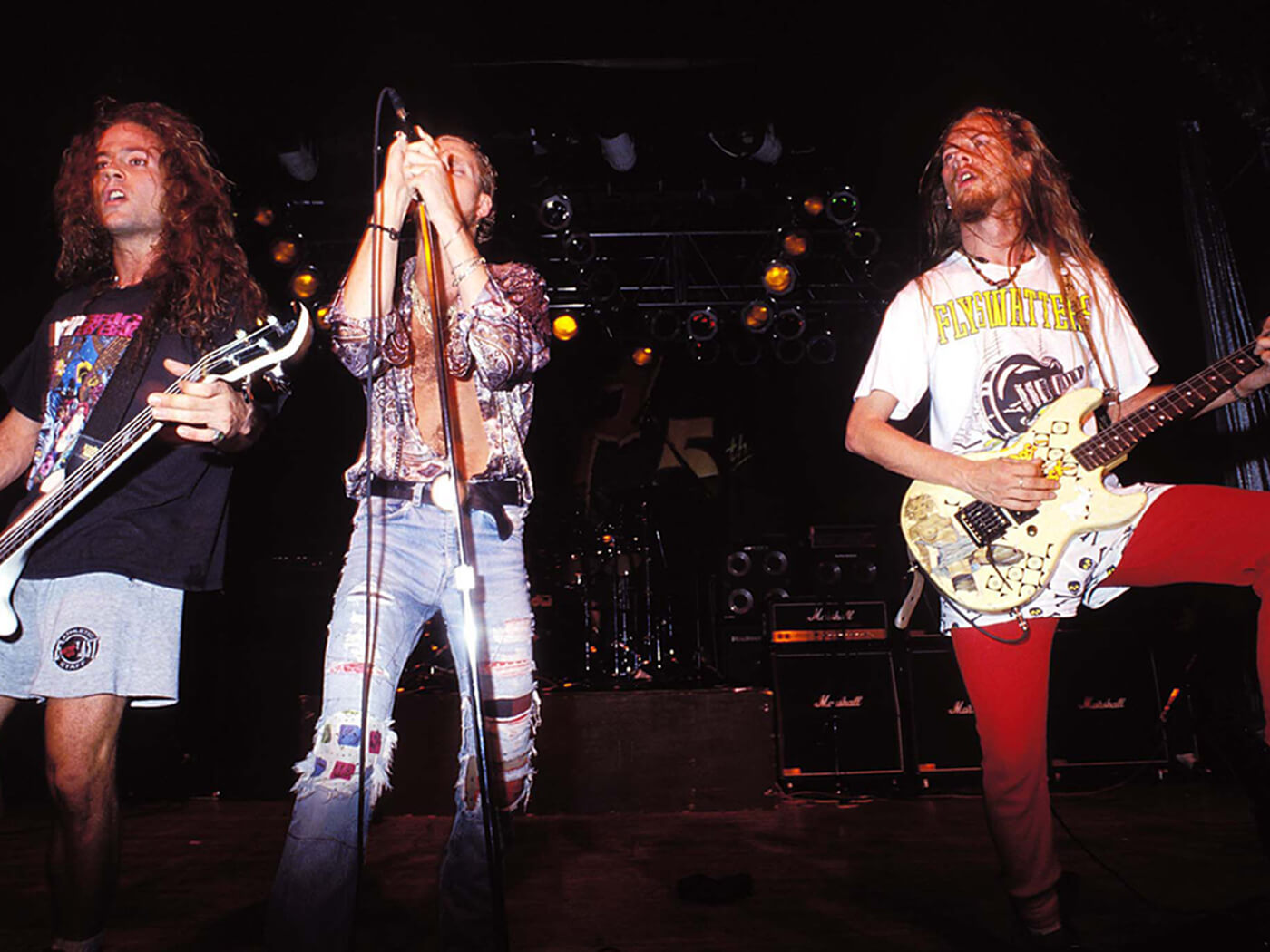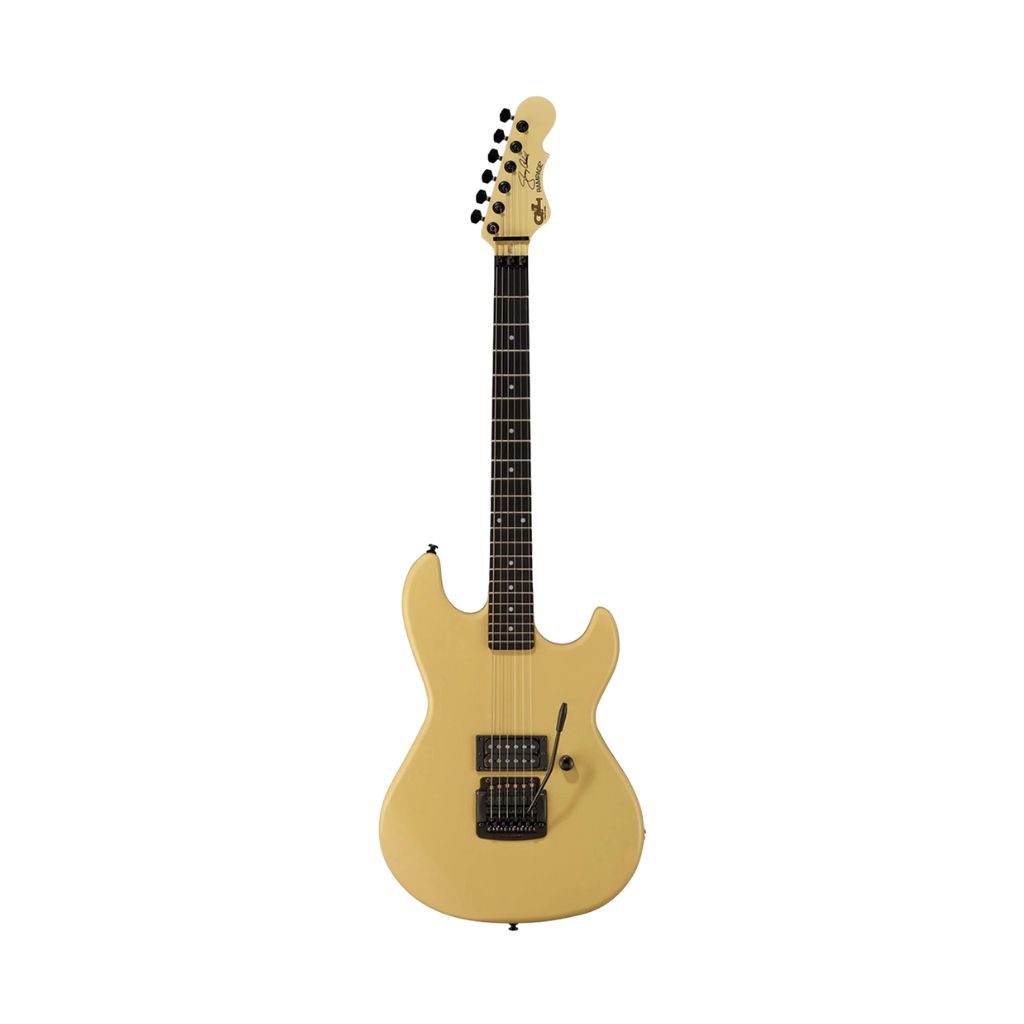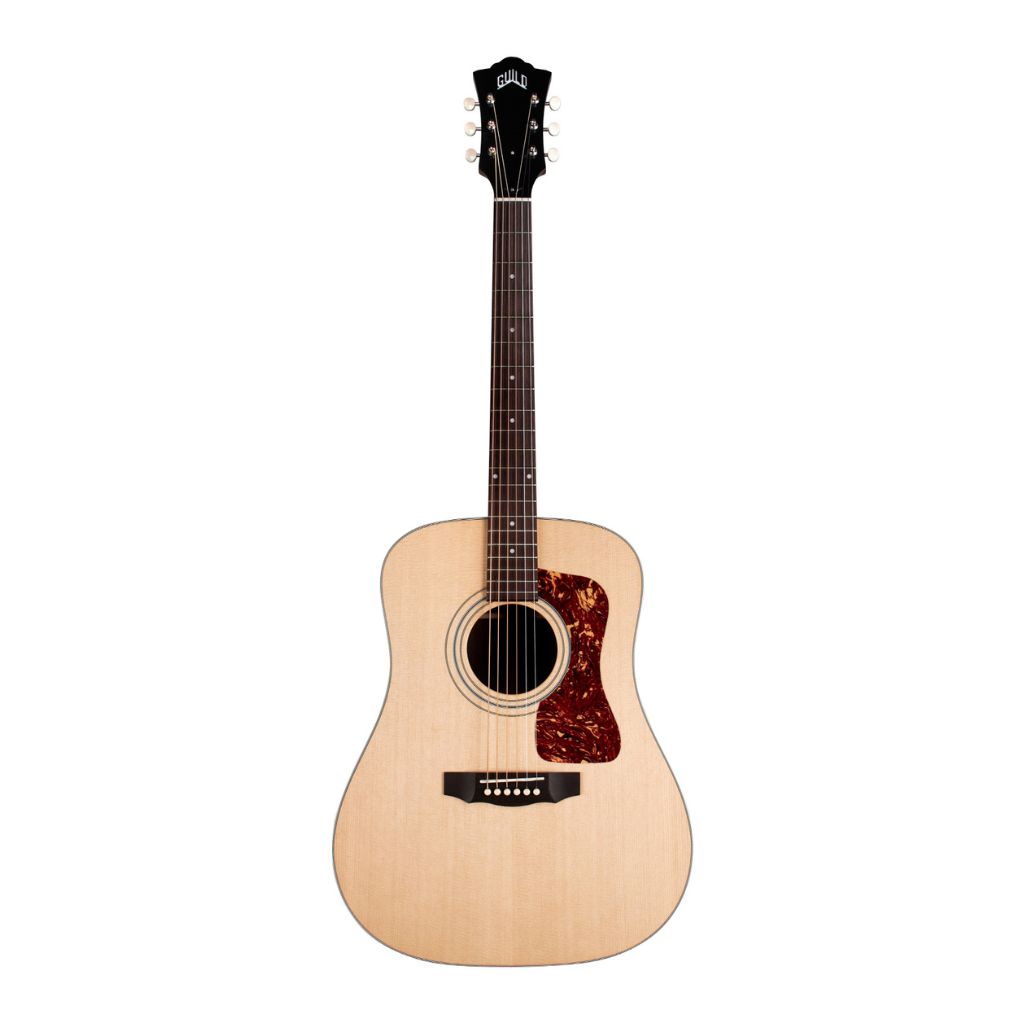The Gear Used by Jerry Cantrell on Alice in Chains’ ‘Dirt’
It’s one of the most iconic albums in grunge, powered by perhaps its greatest guitarist at the top of his game.

Layne Stanley (left) and Jerry Cantrell (right) of Alice in Chains performing in 1992. Image: Ebet Roberts/Redferns via Getty Images
Featured in this article
Alice in Chains began recording their second studio album, Dirt, in Los Angeles at the same time that the LA Riots kicked off. As a result, the band retreated to Joshua Tree to wait out the riot before returning to resume recording. But this was far from the only turbulent aspect of the album’s recording. Singer Layne Staley had recently checked out of rehab and was back to using heroin again, while drummer Sean Kinney and bassist Mike Starr were struggling with alcohol addiction.
Still, the resulting record, Dirt, remains one of the definitive albums of the era. The tones on the record from guitarist Jerry Cantrell remain a high-water mark for many fans of the varied and diverse bands that were lumped together under the umbrella of grunge. The album spawned five hit singles, pushing the album up to number 9 on the Billboard Chart.

The Guitars
For the bulk of the recording of Dirt, as with all Alice in Chains records, Jerry Cantrell’s main guitar was his 1984 G&L Rampage. As he explained to MoPOP, “That guitar has been on everything I’ve ever recorded, pretty much. 98.9% of every song you’ve ever heard [from me] that guitar is on there somewhere.”
Cantrell acquired this guitar from a guitar store in Dallas, Texas, where he had been working in 1985. The Rampage model wasn’t much of a success, and as a result, it was somewhat rare. In fact, by the time Alice in Chains began recording Dirt, the guitar was out of production. It was discontinued in 1990 after a six-year run.
Cantrell’s model was stock when he got it, which would mean it would have come with an ebony fretboard (they switched to rosewood in late 1987 or early 1988), but the rest of the guitar – the neck and the body were all maple. It would have come with a Kahler flat-mount bridge, and the single stock pickup would have most likely been a PAF copy made by Schaller. The guitar would have originally been white – the square/circle pattern was added by Cantrell, as were the “Rock” radio station stickers and the “Blue Dress” pin-up. The pin-up image was originally published in an issue of Oui magazine and was created by Alain Aslan, a world-renowned French painter and sculptor. Today, the guitar is known as the “Blue Dress” guitar, thanks to this adornment.

Other more functional modifications were made to the guitar prior to the recording of Dirt as well. The locking nut was replaced with a Floyd Rose nut. The original Kahler tremolo system was also modified by countersinking it into the body to keep the low E from dropping out. As Cantrell explained to Guitar World,
“The guitar came stock with a Kahler tremolo system, and the low E string would fall out of the saddle when you pushed the tremolo bar all the way down. The solution was to countersink the tremolo, which put more tension on the strings and kept the E string sitting securely in the saddle.”
Today, the pickup in the guitar is said to be a Motor City Humbucker which are hand-made in Detroit. But at the time of the recording of Dirt, it is generally believed to have had a Seymour Duncan JB pickup in it. This was an incredibly popular pickup in the early 90s (it still is).
An acoustic guitar was also used on the album, but the details of this are scant. There has been some speculation online that this was producer “Dave Jerden’s Taylor” through a Vox Super Beatle, but this is unconfirmed.
However, four years later, when the band did their MTV Unplugged album, Cantrell was seen playing two acoustics, a Guild JF30 and a Guild D50. Given Cantrell’s penchant for sticking with guitars that he felt comfortable with, it’s possible that these were the guitars used on the album.

The Amps
Some contradictory statements have been made regarding the amplifiers used on Dirt. However, according to a 2022 Gearspace Q&A with Dave Jerden, the rhythm guitar tones on the album consisted of six tracks. One amp was used for low tones, one for mids, and one for highs; those three tracks would be doubled and panned right and left, making six tracks. According to Jerden, the three amps were as follows:
“Lows: Bogner Fish preamp/VHT amp/Marshall Cab with Vox bulldog speakers; mids: Bogner Ecstasy; highs: Rockman Pocket amp direct. I split the guitar signal to all three amps through a Lucas Deceiver guitar amp splitter made by Terry Manning (ZZ Top engineer). I miked the low and mid amps with a Shure SM57 and the Rockman I took direct injection. As far as the lead guitars, we used my 1988 Marshall 100/50-watt convertible Super Lead amp (with 6L6 tubes, not EL34) modified with an extra preamp stage (and made 100/50-watt convertible) by Mike Moran. This amp (besides the Bogner Fish preamp) are my favourite amps. By the way, Bogner custom-built and modified the Fish and Ecstasy to sound as “brown” as possible. When recording, I compressed all the guitars. We used Summit compressors. I record guitars flat with no EQ so as not to introduce phase problems.”
Cantrell made statements that seem to back this up in a 1993 interview with WoodyTone.

The Effects
Cantrell wasn’t one to rely heavily on pedals but the few he does use, he uses to great effect. One effect was a wah. Of course, today, he has his own signature Cry Baby wah, but back when he was recording Dirt, he was using a Jimi Hendrix version of the Cry Baby. An Electro-Harmonix Small Stone and a flanger (most likely, a Boss) were said to have been used on Rooster.
Dirt continues to provide a tonal benchmark for rock music today. The album’s tonal excellence only scratches the surface of the power and impact this album has had in rock history. Meanwhile, Cantrell continues to move forward with Alice in Chains – a band that is a testament to enduring tragedy.



